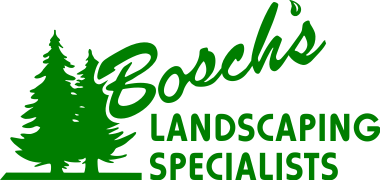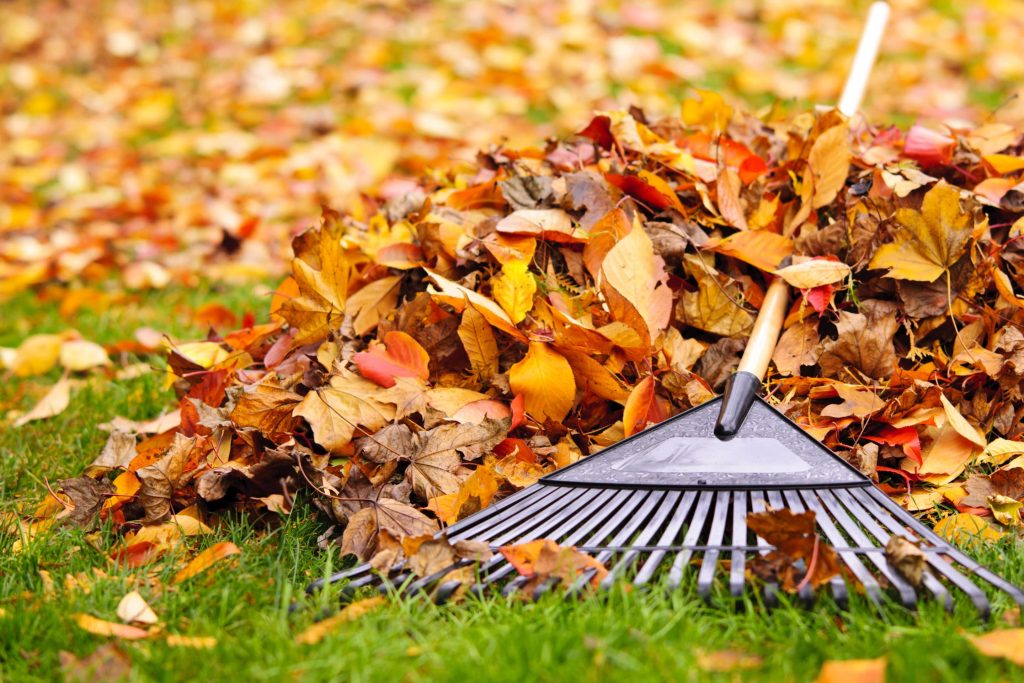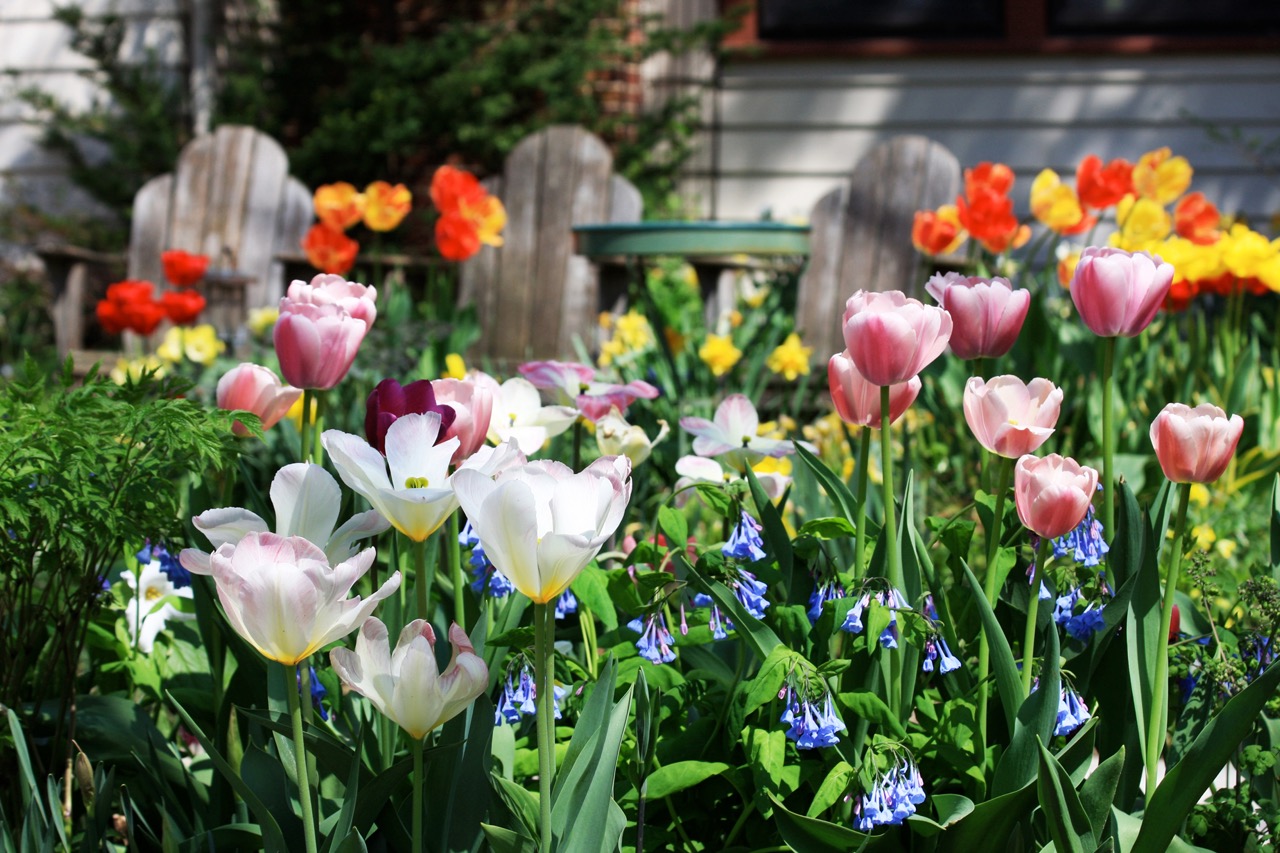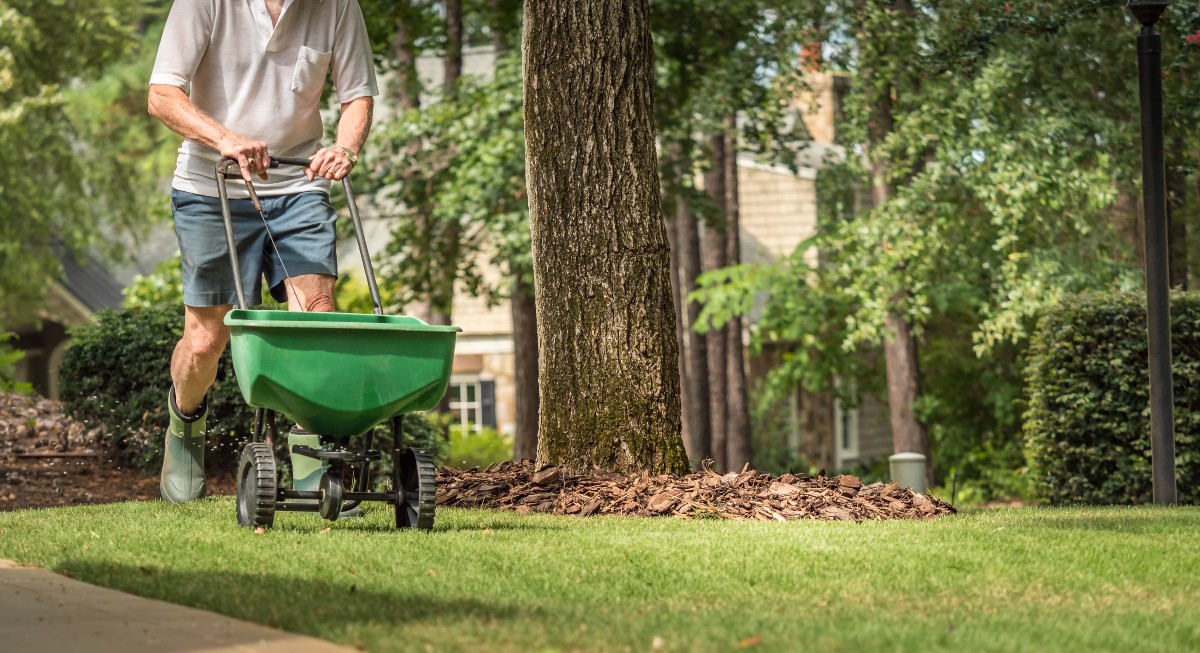It’s hard to find a more beautiful show than Michigan in fall, with the leaves of deciduous trees up and down the block turning vibrant shades of gold, auburn, orange, and more.
Of course, this beautiful show comes at a cost—especially if you have a lot of these trees overhanging your own property! Raking and bagging all those leaves carpeting your lawn, probably several times before the first snowfall arrives, is hard work!
But it’s also necessary work. While we understand the very real temptation to just let the leaves be, not clearing them can have disastrous, damaging consequences for the health of your lawn, especially by the time spring arrives.
Don’t let your reluctance to remove those leaves turn into regret! Read on to find out why this task is so important—and also, importantly, when “good enough” is really good enough.
Too Much Leaf Cover Blocks Light and Air from Your Lawn
One leaf isn’t an existential threat to the blades of grass directly underneath. But if you allow layers of leaves to build up all over your lawn, they can form a significant barrier between your grass and the elements.
This is especially critical during the fall season. The cool-season grasses that make up most Michigan lawns are most active during autumn, and they need a lot of sunlight, water, nutrients, and air to properly “stock up” for the winter.
Add a month or two of leaf cover before the lengthy winter snow cover, and chances are high that your grass will be in rough shape by the time spring rolls back around.
Matted Leaves Invite Pests and Disease
In addition to smothering your lawn and blocking out sunlight and air, a thick layer of leaves can also provide safe haven for parasitic organisms that can damage your lawn.
One of the most common problems is snow mold. This fungal disease typically becomes noticeable in early spring, when melting snow reveals patches of either grayish or pinkish matted grass.
As the name suggests, snow mold is especially common after particularly long winters with lots of snow cover, but an extra layer of leaves that accumulates before the first snow and remains trapped there during the winter significantly increases the risk.
The good news is that snow mold isn’t especially difficult to treat in most cases—but trust us when we say you’d rather not have that eyesore to deal with in spring in the first place!
And unfortunately, snow mold isn’t the only “pest” you have to worry about. That thick layer of leaves can provide a warm nesting opportunity for voles, mice, and other small critters. You definitely don’t want them infesting your lawn!
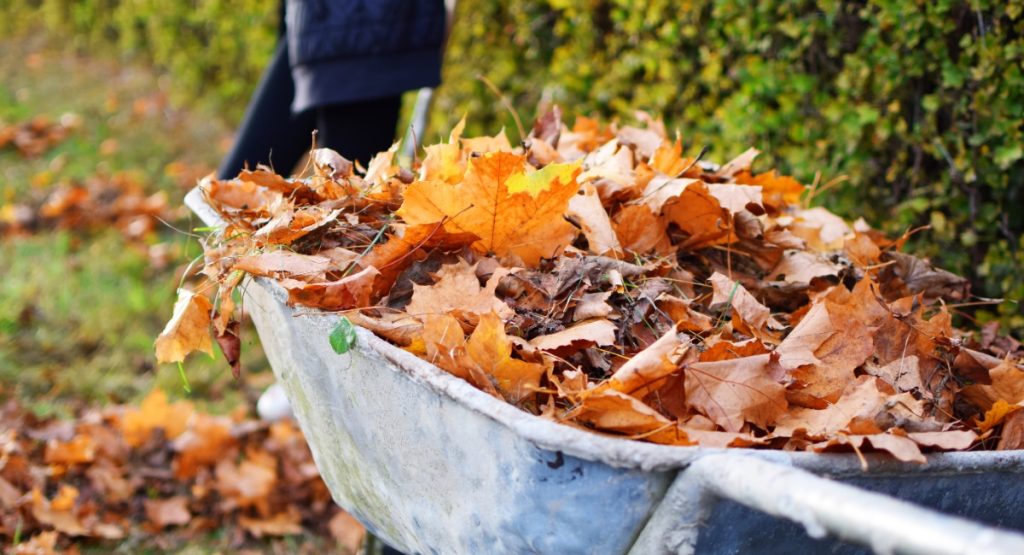
How Good Is “Good Enough?”
We know, we know. Raking and/or blowing leaves is not exactly the most fun activity on a crisp, beautiful fall day. But while regular leaf removal is important, the good news is that you don’t have to rush out with the rake every day and snatch up every leaf before it hits the ground.
In fact, in some circumstances a small amount of leaf material can actually benefit your lawn and garden! So what’s the guideline?
As a general rule, about 10% coverage should be fine, as long as the leaves aren’t piling up in a single concentrated location. Smaller leaves, as you might imagine, are also less of an obstacle than big ones.
Obviously, leaves accumulate at different rates for different yards, depending on the tree cover. For most folks, once per week tends to be fine. If you have a lot of trees, you might need to keep up more often. (Probably still worth it, considering all the summer shade you get!)
If leaf cover is fairly thin and dispersed—as we said, less than 10% cover—go ahead and mulch it up with your lawn mower. Now, instead of big leaves that block sunlight and invite pests, the mulched-up leaves can act as a nutrient source for your hungry grass and as protection for the soil!
If your leaf cover is heavy and wet, however, just running it over with a mower probably isn’t your best choice, and you’re going to want to rake or blow the leaves first. That said, if you have a compost bin or a garden area that needs mulch, you could mow with a bag attachment to collect the shredded leaves, then use some of that mulch in your garden.
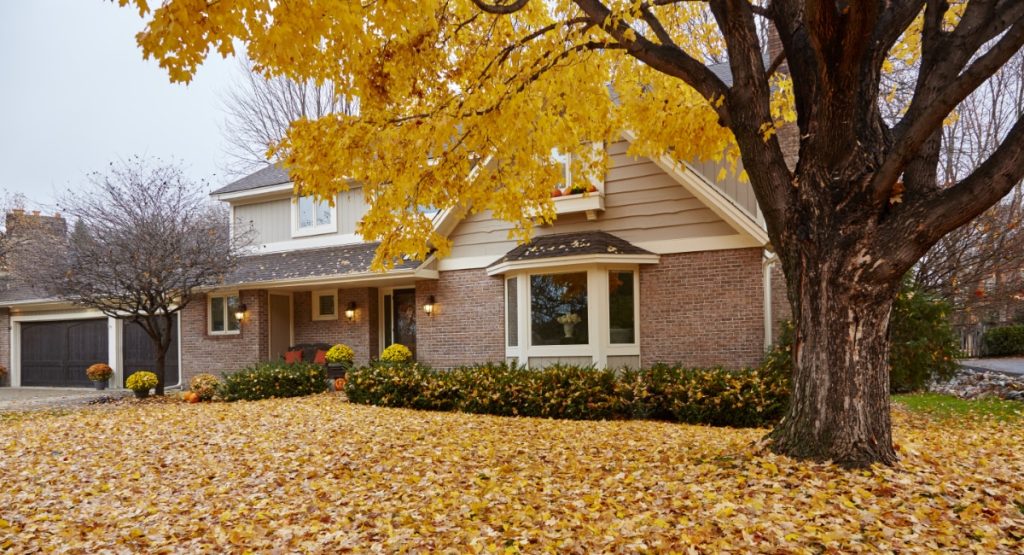
Do I Really Have to Do All This Work?
If you want your lawn to be as healthy and beautiful as it can be—both now and when spring returns—someone needs to take care of it.
But if you find yourself having trouble keeping up, you can always call Bosch’s for our lawn maintenance services!
Fall cleanup services include regular leaf removal, but can also include other essential autumn yard tasks like pruning late-blooming perennials, flower bed care, and fertilization. We’re happy to work with you to determine what tasks are required and set a mutually agreeable schedule.
And if you’re happy with our work this fall, consider making Bosch’s your go-to service for year-round lawn maintenance: mowing, raking, aerations, dethatching, spring and fall cleanup—the works.
But with the winter coming soon, you don’t have a lot of time left to get your lawn fully prepared for the colder months! Give our Holland headquarters a call at (616) 399-6861 or drop us a line using our online contact form for any questions
